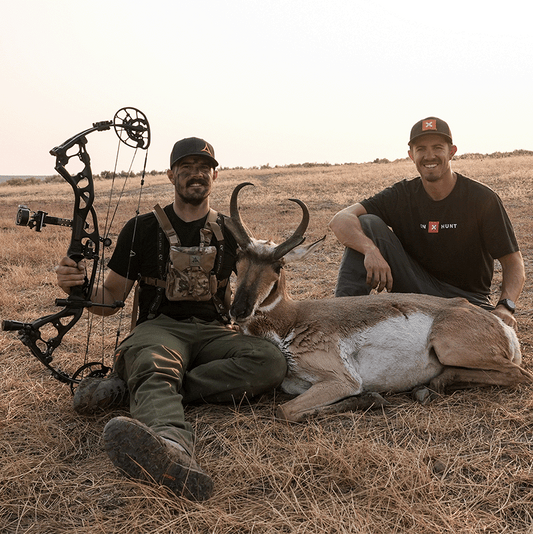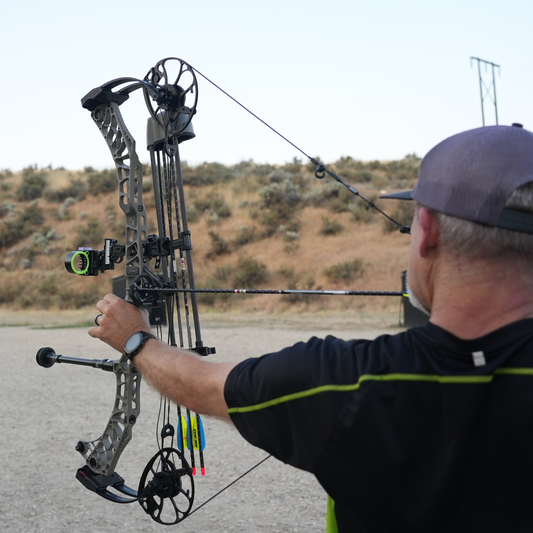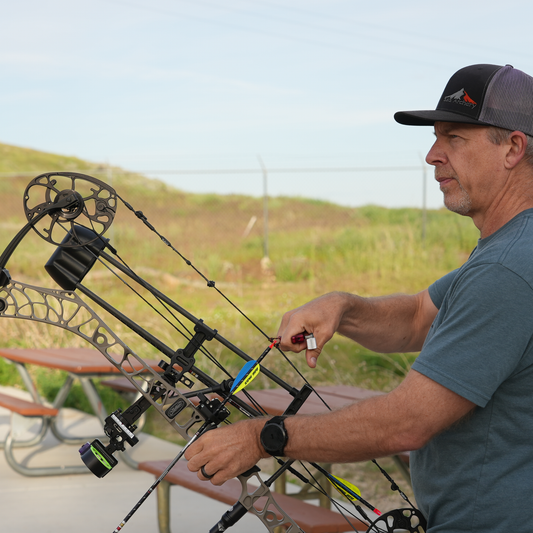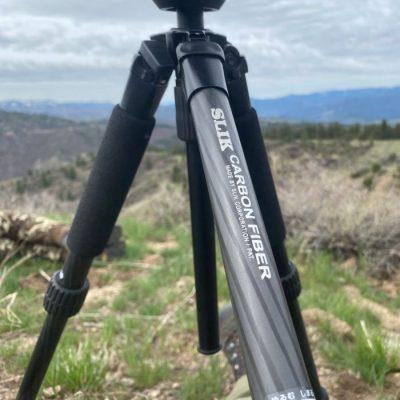SLC vs Razor
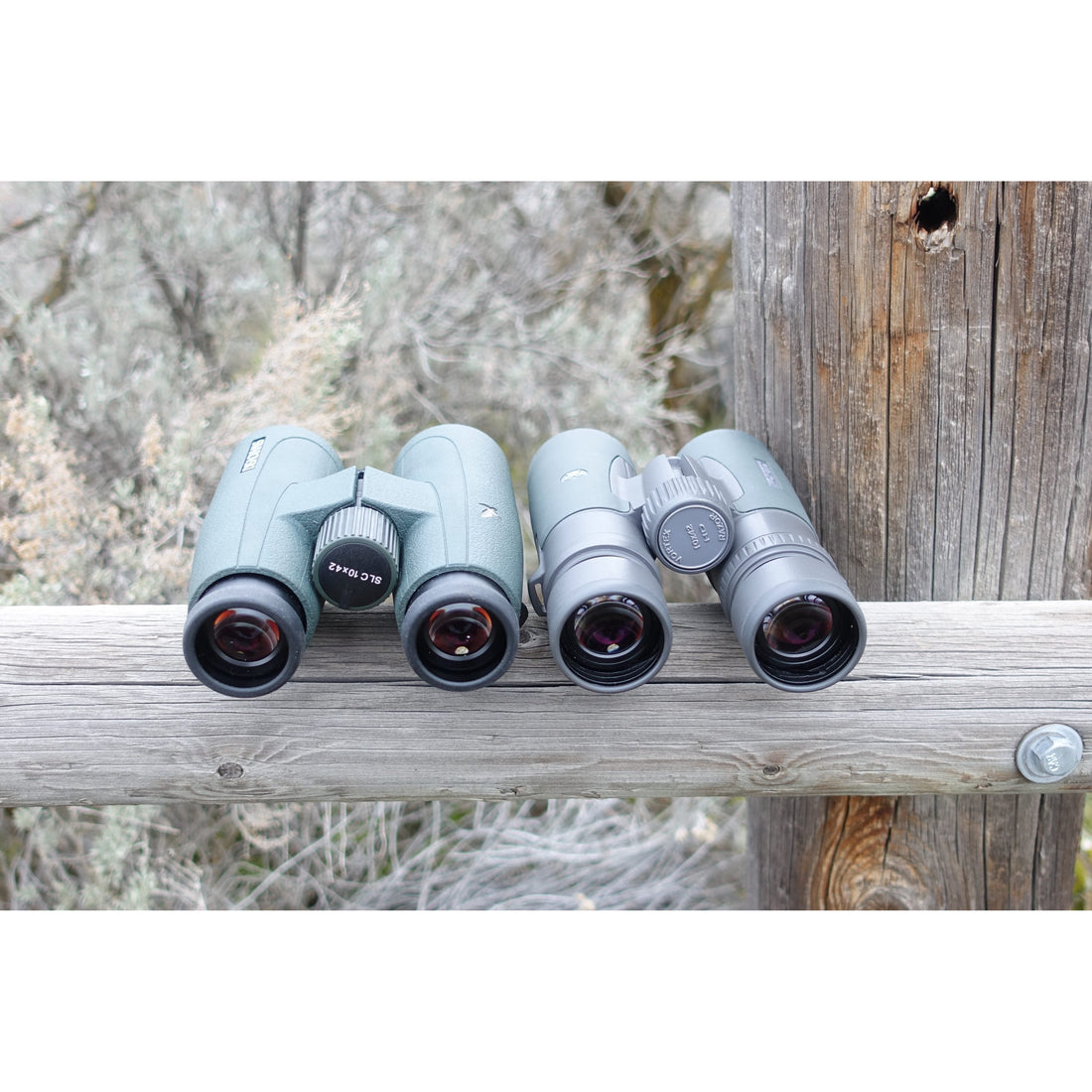
Swarovski SLC vs Vortex Razor HD

SLC vs Razor
Is it worth spending the extra money for the Swarovski SLC binoculars over the Vortex Razors HD’s? I’ve wondered this myself. After reading as much info as I could get my hands on, it seemed like there were so many opinions out there that I needed to do a comparative analysis myself to decide. I picked up a pair of both binoculars in the 10x42’s and started testing. For reference, my sole purpose for these binoculars is hunting out west, so this analysis comes from a western hunter’s mindset. Also of note is that I’m not endorsed or a part of either brand….I paid for both of these binoculars. There are many things to consider when making a choice on binoculars, and I realize that each hunter’s eyes, preferences, usage etc. will be different. So, I hope this will help you make your own decision. I realize there are many other pairs of binoculars that could be included in this review, but for me, I had narrowed it down to these two because of their reputation for great products and great customer service. These are both fantastic pairs of binoculars with amazing glass.Exterior Features
Look: At first glance, I preferred the look of the Razors. To my eye, they appear more modern with two tone armor coating. Also, I instantly noticed that the Razors appeared to have a more slim design. That said, the SLC’s have a very distinct look, and are quickly recognized by most optic enthusiasts. I’ll give the Razors the edge in the appearance department….granted that is very much a personal preference. Feel: Picking up both pairs, I noticed that the Razor’s felt lighter while the SLC’s felt a bit heavier and more bulky. The SLC’s, while slightly shorter in height, but fit my hand a little better. I wear a size XL in gloves, so the bulkier aspect of SLC’s was more comfortable for me to hold. The SLC’s featured soft rubber armor, while the Razors featured a non-slip rubber armor that felt more firm to the touch. Eye Cups: Both felt solid with multiple click adjustments to handle different eye relief positions. The SLC’s rotated with more resistance and seemed less likely to move while hiking, but not enough to worry about. When I put them up to my eyes, I instantly noticed that the SLC’s felt more comfortable due to the more rounded edges of the eye cups. The Razor’s eye cups are built with a thinner edge, thus when held up to you eye socket, the pressure was more noticeable. The SLC’s just fit my face more comfortably.
Eye Cups: Both felt solid with multiple click adjustments to handle different eye relief positions. The SLC’s rotated with more resistance and seemed less likely to move while hiking, but not enough to worry about. When I put them up to my eyes, I instantly noticed that the SLC’s felt more comfortable due to the more rounded edges of the eye cups. The Razor’s eye cups are built with a thinner edge, thus when held up to you eye socket, the pressure was more noticeable. The SLC’s just fit my face more comfortably.
 Diopter: The Diopter on the Razors is located just below the eye cup on the right side. It is located on the focus wheel on the SLC’s (by pulling it towards you).
Diopter: The Diopter on the Razors is located just below the eye cup on the right side. It is located on the focus wheel on the SLC’s (by pulling it towards you).
 Both were easy to set and worked flawlessly, but I preferred the setup on the SLC’s. I found myself making a conscious effort not the grab the diopter when pulling the Razor’s out of my Alaska Guide Creations bino harness. If I were using a different harness, this may not have been a concern. The location of diopter adjustment on the SLC’s required a much more deliberate attempt to change. Both did lock into place though.
Both were easy to set and worked flawlessly, but I preferred the setup on the SLC’s. I found myself making a conscious effort not the grab the diopter when pulling the Razor’s out of my Alaska Guide Creations bino harness. If I were using a different harness, this may not have been a concern. The location of diopter adjustment on the SLC’s required a much more deliberate attempt to change. Both did lock into place though.
 Focus Wheel: When I reached for the focus wheel, both were very convenient and positioned well. As I began adjust the image, the two had a very different feel to them. The Razor offered much more resistance and adjusted the image much more quickly. The SLC’s wheel moved more freely but required more rotation to bring the image into focus. There were pros and cons to both. Neither pair had any noticeable play. On the Razors, I found myself over-adjusting the focus, then coming back to focus much more than the SLC’s. I also found it easier to fine focus with the SLC’s. On the flip side, more rotation was required to initially bring the image into focus on the SLC’s. While the focus wheel felt stiffer on the Razor’s, it turned more smoothly than the SLC’s. The SLC’s felt a little course, or grainy compared to the Razors. I think this is an area the SLC’s could be improved given the price point. One negative I experienced with the Razors was that the rubber cover on the focus wheel came loose over the course of a seasons use. This surprised me coming from a pair of binoculars of this quality. I think the design flaw here is that the rubber cover is glued on to start with. To me, this should be one solid piece. Not a big deal and easy to fix, but surprising for binoculars of this quality to fail me in the field. Overall, I preferred the focus wheel of the SLC’s and can live the grainy feel of the focus wheel.
Tripod Adaptability: Both were easily tripod mountable using many different styles of tripod adapters. We like the Field Optics Research Bino Adapter.
Here's a quick reference chart outlining the above comparison.
Focus Wheel: When I reached for the focus wheel, both were very convenient and positioned well. As I began adjust the image, the two had a very different feel to them. The Razor offered much more resistance and adjusted the image much more quickly. The SLC’s wheel moved more freely but required more rotation to bring the image into focus. There were pros and cons to both. Neither pair had any noticeable play. On the Razors, I found myself over-adjusting the focus, then coming back to focus much more than the SLC’s. I also found it easier to fine focus with the SLC’s. On the flip side, more rotation was required to initially bring the image into focus on the SLC’s. While the focus wheel felt stiffer on the Razor’s, it turned more smoothly than the SLC’s. The SLC’s felt a little course, or grainy compared to the Razors. I think this is an area the SLC’s could be improved given the price point. One negative I experienced with the Razors was that the rubber cover on the focus wheel came loose over the course of a seasons use. This surprised me coming from a pair of binoculars of this quality. I think the design flaw here is that the rubber cover is glued on to start with. To me, this should be one solid piece. Not a big deal and easy to fix, but surprising for binoculars of this quality to fail me in the field. Overall, I preferred the focus wheel of the SLC’s and can live the grainy feel of the focus wheel.
Tripod Adaptability: Both were easily tripod mountable using many different styles of tripod adapters. We like the Field Optics Research Bino Adapter.
Here's a quick reference chart outlining the above comparison.
| Feature | Vortex Razor HD | Swarovski SLC |
| Weight | 24.8oz | 27oz |
| Dimensions | 5.9in x5.1in | 5.7in x 4.7in |
| Armor Coating | Rubber(firm) | Rubber(Soft) |
| Eye Cups | Twist up | Twist up |
| Diopter | Locking – Below Right Eye Cup | Locking – Focus Wheel |
| Focus Wheel | Stiff, smooth, fast focus | Free, slower focus, grainy |
| Tripod Mountable | Yes | Yes |
| Field of View | 362ft/1000yds | 330ft/1000yds |
 Edge to Edge Clarity: Both give a fantastic edge to edge clarity. There were, however a couple noticeable differences. First, the very outer edge of the image on the Razors had a gray haze that was noticeable. This only accounted for maybe 3-4% of the field of view, but was noticeable. The Razors do have a slightly bigger field of view, but the gray haze actually reduced the field of view slightly to my eyes, rendering the outside edge of the FOV on the Razors unusable. The SLC’s did not have this issue as the entire field of view was sharp and clear. Both displayed a crystal clear image in the center, with very slight loss of clarity as you approach the outer edges. When trying to utilize the outer edges of the FOV, I found myself slightly repositioning the Razors on my face, while that was not the case with the SLC’s. I found the SLC’s to be more forgiving to movement while retaining the entire FOV
Overall Image Quality/Light Gathering: Both the Razors and the SLC’s have fantastic light gathering ability and produce an amazingly crisp, clear image. They are both top notch, and the differences noted here at times were hard to distinguish, and at other times, very distinct.
Edge to Edge Clarity: Both give a fantastic edge to edge clarity. There were, however a couple noticeable differences. First, the very outer edge of the image on the Razors had a gray haze that was noticeable. This only accounted for maybe 3-4% of the field of view, but was noticeable. The Razors do have a slightly bigger field of view, but the gray haze actually reduced the field of view slightly to my eyes, rendering the outside edge of the FOV on the Razors unusable. The SLC’s did not have this issue as the entire field of view was sharp and clear. Both displayed a crystal clear image in the center, with very slight loss of clarity as you approach the outer edges. When trying to utilize the outer edges of the FOV, I found myself slightly repositioning the Razors on my face, while that was not the case with the SLC’s. I found the SLC’s to be more forgiving to movement while retaining the entire FOV
Overall Image Quality/Light Gathering: Both the Razors and the SLC’s have fantastic light gathering ability and produce an amazingly crisp, clear image. They are both top notch, and the differences noted here at times were hard to distinguish, and at other times, very distinct.
 Mid-Day Glassing: During the sunny mid-day testing, it was difficult to tell any difference between the two. Without putting them on a tripod, you would be hard pressed to see a difference at all. Both were crisp, clear, and produced true colors. The two do have a slightly different color temperature, but this is less noticeable during mid-day glassing.
Poor Visibility (fog/low clouds): I could see slightly better color contrast in the SLC’s on this dreary day. The dark colors were darker and light colors were lighter. The edges of colors were a bit sharper and more defined on the SLC’s. Also, I began to notice some chromatic aberration with the Razors that the SLC’s did not display. With an elk on the ridge, I could see that “halo” effect around the outline of the animal with the Razors. The SLC’s didn’t have this problem. Also noticeable was a different color temperature between the two. The Razors seemed to be a bit more on the gray scale, while the SLC’s appeared to have a slight yellowish tint to the image. For this reason, colors, when viewed through the Razors seemed to be slightly duller than the SLC’s.
Low-Light (dawn/dusk): Color contrast became much more evident in low light scenarios. This low light setting is where the SLC’s really out shined the Razors. When viewing images when light was fading fast, the image of the Razors became less defined, and increasingly lacked contrast. The Razors quickly lost the ability to clearly focus on the detail of objects. In a hunting situation, this could mean the difference between spotting that leg or antler in prime hunting hours after sunset or before sunrise. As light continued to fade, it became increasingly evident that the SLC’s were superior in low light conditions. They simply produced a more crisp, well contrasted, and detailed image. Detail began to run together with the Razors while the SLC’s held on to the detailed image.
Price Point: The Vortex Razor HD sells for $1,199, while the Swarovski SLC's sell for $1,799.
Mid-Day Glassing: During the sunny mid-day testing, it was difficult to tell any difference between the two. Without putting them on a tripod, you would be hard pressed to see a difference at all. Both were crisp, clear, and produced true colors. The two do have a slightly different color temperature, but this is less noticeable during mid-day glassing.
Poor Visibility (fog/low clouds): I could see slightly better color contrast in the SLC’s on this dreary day. The dark colors were darker and light colors were lighter. The edges of colors were a bit sharper and more defined on the SLC’s. Also, I began to notice some chromatic aberration with the Razors that the SLC’s did not display. With an elk on the ridge, I could see that “halo” effect around the outline of the animal with the Razors. The SLC’s didn’t have this problem. Also noticeable was a different color temperature between the two. The Razors seemed to be a bit more on the gray scale, while the SLC’s appeared to have a slight yellowish tint to the image. For this reason, colors, when viewed through the Razors seemed to be slightly duller than the SLC’s.
Low-Light (dawn/dusk): Color contrast became much more evident in low light scenarios. This low light setting is where the SLC’s really out shined the Razors. When viewing images when light was fading fast, the image of the Razors became less defined, and increasingly lacked contrast. The Razors quickly lost the ability to clearly focus on the detail of objects. In a hunting situation, this could mean the difference between spotting that leg or antler in prime hunting hours after sunset or before sunrise. As light continued to fade, it became increasingly evident that the SLC’s were superior in low light conditions. They simply produced a more crisp, well contrasted, and detailed image. Detail began to run together with the Razors while the SLC’s held on to the detailed image.
Price Point: The Vortex Razor HD sells for $1,199, while the Swarovski SLC's sell for $1,799.
Customer Service/Warranty
The Vortex VIP Lifetime, No Fault, fully transferable warranty is fast and efficient…it’s the real deal. Their customer service is top notch and they go out of their way to earn your business. Swarovski’s Lifetime Warranty is also very good, and is transferable to a second buyer by the seller calling to terminate their warranty registration (if purchased used). Swarovski’s warranty is not “No Fault”, so if you happened to break your optics, you could be facing a repair bill (though they only charge for the cost of the part, not labor). Swarovski’s customer service is also very good, but their turnaround time for repairs tends to be longer than Vortex. The winner in the category is Vortex.

